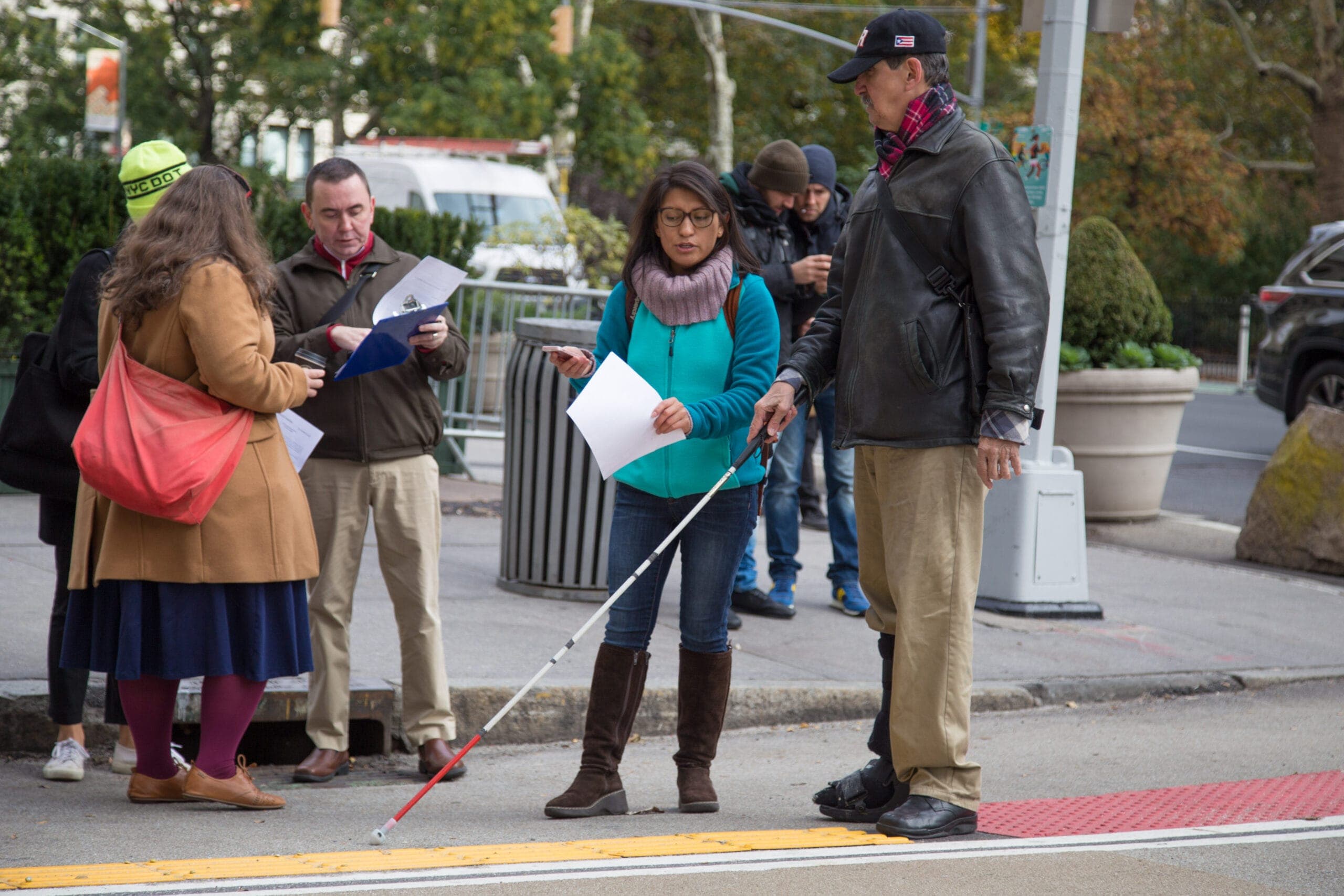
News
By Courtney Cole, October 15, 2024
Disabled Americans face significant challenges with independent travel, as they are more reliant on transit but often encounter accessibility barriers. This isolation leads to severe physical and mental health impacts, with loneliness affecting people with disabilities at over four times the rate of non-disabled individuals.

Disabled Americans are less likely to own a personal vehicle in a world designed for cars, people with disabilities are nearly twice as likely to use transit as their non-disabled peers. When transit is inaccessible to the disability community because of barriers like a lack of elevators, accessible signage, audible cues, and other critical accommodations, they are part of the 3.6 million disabled Americans forced to stay at home. Such isolation has severe impacts on physical and mental health—with evidence showing that people with disabilities experience loneliness at over four times the rate of their non-disabled peers, and a 2023 report from the Surgeon General revealing that loneliness and isolation are linked to increased risk for a number of diseases and mental illnesses.
A Complete Streets approach that supports transit and other non-motorized transportation options for people with disabilities can help tackle this trend. However, even those who have transit systems available to them face challenges that can create barriers to achieving full physical and mental well-being.
Every member of the disability community has a unique experience. I can only share my own, so keep in mind that not every disabled person has the same preferences. My own experience has taught me that in addition to a lack of physical accessibility within transit, ableism—the assumption that the bodies and minds of non-disabled people are the default, and disabled bodies are less valuable—leads to behaviors that create difficult, hostile, or even dangerous environments for people who have disabilities. Here are some do's and don'ts for transit riders who want to contribute to a more accessible, equitable environment:
Don't
Touch: Even if the person has said they would like help, that's not an invitation for physical contact. Never physically touch a disabled person or their mobility aid without explicit consent.
Interrogate: Don't ask random disabled strangers invasive questions. Imagine meeting someone for the first time—you don’t immediately dive into things like their family history or past relationships because it’s not appropriate to ask those kinds of things until you’ve developed a deeper level of trust. Meeting a disabled person shouldn’t be any different. While disability isn't a bad thing, questions about things like someone’s medical condition or the nature of their disability are too personal to ask someone you're just meeting for the first time.
Take it personally: Many disabled people will be very appreciative of your efforts—but just as many may not be impressed. The disability community has been advocating for basic rights and courtesies for decades and deals with ableism daily. It’s important to remember that though your efforts are meaningful, they are behavior changes that are long overdue. Disabled people don’t owe profuse gratitude for being given respect and support—so don’t expect it.
Do
Listen and respect: If you want to offer assistance, make sure to ask "Can I help you?" before jumping in. And if the person says no, accept and respect it. If someone asks for a seat, don’t question them. As long as you don't have a disability that means you need the seat yourself, just be courteous and relocate for those who ask.
Offer physical assistance: While it’s not okay to touch someone without their consent, sometimes physical support can be helpful. To provide that, ask things like "Would you like to take my arm?" or “What’s the best way to assist you?”
Act natural: Disability is natural, so act natural around disabled people. Ask about things like work, hobbies, interests, and favorite foods when first meeting them just like you would with anyone else, and don’t bring up more personal topics unless they come up organically.
How you can be an ally
To be a true ally to any historically marginalized community, you need to know about more than just one perspective. To get started you can check out the work of Alice Wong, Emily Ladau (including The Accessible Stall podcast, hosted by Emily and Kyle Khachadurian), Haben Girma, Imani Barbarin, Judith Heumann, Sins Invalid, and Stella Young. There are many more great disability activists out there but starting with these will no doubt lead you to other great sources of knowledge.
Everyone can play a part in creating more accessible transit experiences. For individuals, doing your best to implement the advice above would be a great start. Those who have influence within transit companies and organizations can take action on a systemic level to create more accessible, equitable environments by advocating for staff training on disability etiquette, posting information in and around facilities to inform passengers of best practices, and consulting disabled people to give input before changes are implemented.
We are all only human and no one gets it right every time. Disabled people aren’t exempt from making mistakes either—I’ve made plenty when interacting with my fellow community members. Using good judgment, being respectful, and making an effort to learn are easy ways to avoid making things inaccessible or uncomfortable for those of us with disabilities on public transit and beyond.
Related News

© 2026 Smart Growth America. All rights reserved
Site By3Lane Marketing








